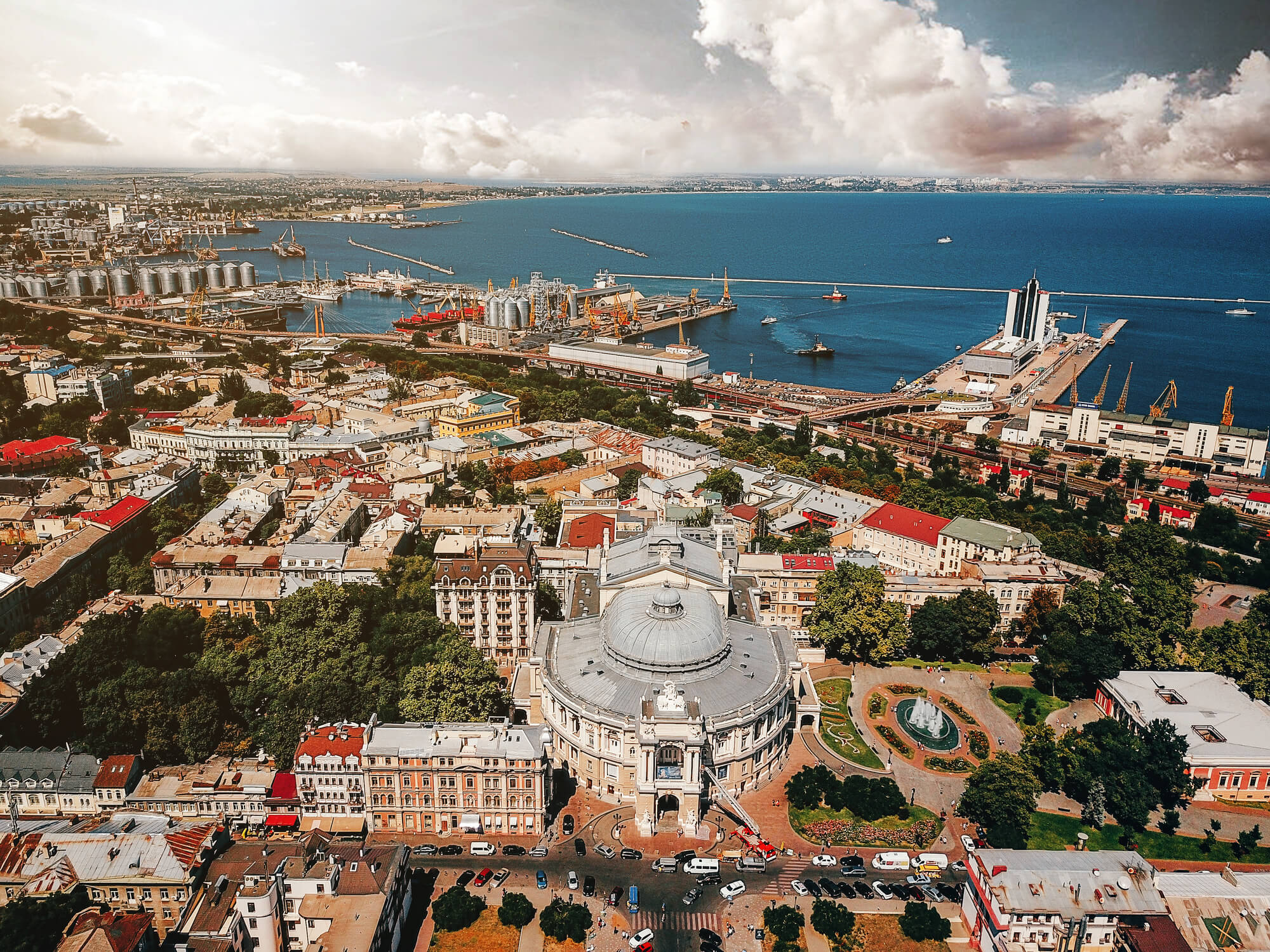As a critical part of the nation’s infrastructure and a driver of economic growth, Ukraine must develop a coherent plan to modernize and improve its railways. The recent reform plan begins to address the issue, but it is far from a perfect solution. Instead, bolder steps are needed to realize progress and avoid the pitfalls experienced with liberalization elsewhere on the continent.
Recently, plans have been discussed regarding the liberalization of Ukrainian railways along lines pursued by most of the countries in the EU in recent times. This is a standard practice for new and aspiring EU countries, and the methodology has been largely the same: split the infrastructure and operating arms of the railway system, and privatize the latter. Ukraine’s approach is essentially no different, with infrastructure, operating, and regulatory arms nominally separated but still combined under the control the Ministry of Infrastructure. This approach fails to address fundamental conflicts of interest, and sets up anti-competitive tendencies at the outset which previous experience has proven to hamper later efforts at liberalization. If Ukraine continues to follow this path, one already followed by many European nations, it can expect to run into a complicated set of issues.
The path Ukraine is currently pursuing is a model of “horizontal” separation, which involves different companies owning physical infrastructure such as the rails and overhead power, and others owning operating rights and the trains themselves. The operators, by paying access fees and adhering to safety regulations, are able to gain admittance to the infrastructure owners’ rails.
First, it is worth considering the advantages and disadvantages of the horizontal model. One of the most noteworthy examples of this is Europe and especially the United Kingdom. The results have been mixed: freight rail has seen a 60% increase in the last 10 years, while accidents and defaults have been on the rise. There the infrastructure owner, once a publicly traded company, was renationalized in 2002 after financial difficulties, and various individual operating companies have been renationalized since. The system of franchising various routes adds to the confusion, as a given franchise will have different operators over time, making it hard to ensure consistency and financial responsibility.
Most countries on the continent pursued a somewhat different approach, preferring to keep infrastructure in government hands from the outset. But, this has hardly proven an effective remedy. Freight traffic elsewhere on the continent has struggled, and genuine private-sector competition still leaves a lot to be desired. Many governments have both infrastructure and operating arms, which though nominally separate are able to collaborate against competitors through holding companies or transport ministries. Clear incentives are in place, from a market share standpoint, for government infrastructure owners to give their sister operating companies priority. Consider the recent case involving Deutsche Bahn, where the European Commission forced Deutsche Bahn’s infrastructure division to abandon policies whereby they provided a volume discount that only Deutsche Bahn’s operating division qualified for.
Sometimes, though, the inefficiency of state-owned operators leads to opportunities for private operators. Consider the case of France, which recently reduced and in some cases eliminated freight service to smaller shippers, forcing them to chose more expensive and less efficient trucking services. The labor cost and lack of capacity on state operator SNCF forced this decision, but Rail Development Corp., a US-based freight rail business, recently opened its own operating company to take over some of this business.
The horizontal method can have other benefits. Places with horizontal organization generally have a lot of operators; if they pay the access fees and adhere to regulations, they can operate across the entire country and often internationally. This spreads competition fairly evenly across the country, preventing regional oligopolies or monopolies found in the US and elsewhere. Less private investment is required in the case the state maintains ownership of the infrastructure, since companies only need to pay for locomotives and cars. This can be a doubled-edged sword, however, if the government can’t make the investments in infrastructure necessary to make operation attractive to private companies.
So, if Ukraine follows such a plan, what might be the outcome? The current plan calls for operations and infrastructure to be united under the Ministry of Transport. At the outset, this creates a concerning potential for collaboration against potential entrants into the railway operating markets, since it can be assumed that UZ will be reluctant to hand over its former business to outsiders. But outsiders would probably abound, given the size, strategic location, and profitability of the freight market—Ukraine’s agricultural output in particular. How might infrastructure fare? Here is the second pitfall of the plan: the already cash-starved government would have to invest enough in upgrading and maintaining the physical plant for operators to be assured that they will have a safe, efficient network to run on.
And how would these advantages and disadvantages, in relation to Ukraine, sum up? The freight market would be an attractive prospect, but it seems that the outdated infrastructure would have little hope of meaningful government investment, and the long established institution of UZ would be a juggernaut that would have market power and the ability to make effective competition difficult through its infrastructure arm. The combined uncertainties of government investment and the power and political corruption that has marked UZ would make investment unlikely for all but the most committed.
What might be an alternative course? Dr. Russell Pittman pointed it out in a previous article: vertical separation. Here, companies would own both their own infrastructure and their own operating arms, with infrastructure divided up between different companies to ensure that competing companies serve the same areas. Competing operator/infrastructure combinations would have several advantages that the horizontal model would not. It would introduce more investor control by adding the assets of the infrastructure to independent investors, not a government bureaucracy with vested interests. It would put much more of the responsibility of financing the infrastructure on private operators, who would then have a direct incentive to keep their tracks in the best possible condition. And, it would ultimately break the market power of UZ.
This approach is not without its downfalls. Two of the most important are the higher investments required by private companies due to the addition of infrastructure to the portfolio, and the potential to create ogilopolies. However, if the government regulates this properly—prevents freight tariff pricing power abuse—and engages in public-private partnerships, these concerns can be mitigated. And what might be the outcome if Ukraine implements this plan instead? Investors will still come forward, attracted by the large freight market, their concerns about increased infrastructure costs offset by the knowledge that as infrastructure owners, they can responsibly see to the fair and efficient running of their network. Companies like Deutsche Bahn, Rail Cargo Austria, and Genessee and Wyoming are a few of the group of companies with the money and expertise to get the job done. And the railways would get a much needed upgrade at a price far less than what the government alone would pay thanks to the introduction of larger amounts of private capital.
This course has proven successful in Mexico and Brazil, and can easily be adopted to Ukraine. There are a few concerns that will have to be addressed, particularly regulations to avoid monopoly/oligopoly concerns, and the division of the network to ensure that different companies compete for the traffic between different cities. But if this is done[JS1] , the potential for success is strong. The higher initial costs for private investors and the delicate nature of executing the privatization plan may seem nearly insurmountable in the short and even medium term, but in the long run, a country such as Ukraine with a strong industrial sector will benefit from vertical integration in the rail industry. After all, many industrial countries, including the Brazil, Mexico, Australia, have succeeded with this method, and the rail industry in the United States, which has always been vertically integrated, is arguably the best in the world.
The current plan, which sees the infrastructure, operating, and regulatory arms ultimately overseen by the Ministry of Infrastructure[2] , has all the same weaknesses that currently hamper other European countries. Before the October vote in Parliament, it is worth considering alternative options, and particularly a vertical separation of the industry, to avoid the immense disadvantages offered by the horizontal system. In this way, Ukraine can use the current political will to put its rail transportation system on the right track for success in the future.
Attention
The author doesn`t work for, consult to, own shares in or receive funding from any company or organization that would benefit from this article, and have no relevant affiliations



